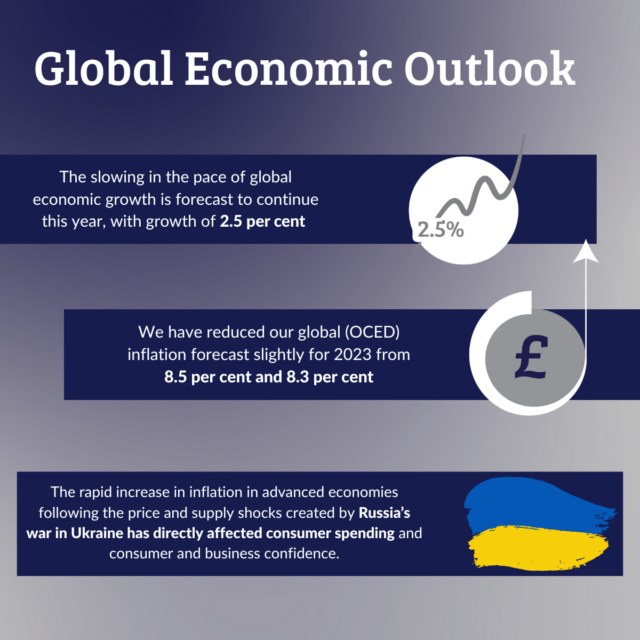It Is Time to Rethink the Balance of Monetary and Fiscal Policy
In the face of the twin shocks from the Covid-19 pandemic and war in Ukraine, is it time to look for alternative policy choices as we seek to manage inflation?

The global economy has been subject to two significant shocks, the Covid pandemic and the war in Ukraine. Adding across them, these events are forcing us to rethink some of our basic propositions on how economic policy ought to be structured. The post-global financial crisis settlement of ultra-low interest rates and escalating public and private debt seems no longer tenable.
Nominal interest rates are being normalised in a manner that is exposing balance sheets to considerable risk in terms of debt service, but also vulnerability in the face of future shocks. There is a serious danger here of a central bank mistake, if policy-makers overcompensate for past errors.
A prolonged war of attrition in Ukraine has raised energy and food prices sharply, in a world where supply chains have not fully recovered from the receding Covid cloud. The imposition and management of sanctions with Russia has opened up difficult questions about our economic relationships with the new economic giants of China and India.
In many countries, there are demands for a greater emphasis on the public sector to support health and defence. Expenditure in these areas is both expensive and increasingly necessary. This shift in emphasis is all taking place against a background of stuttering growth across much of the advanced world, where long-held beliefs about ever-increasing living standards are having to be revised downwards.
And so, our monetary and fiscal frameworks are being put under a severe test. The groupthink, which so often characterises central banking, arguably led to a delayed exit from the extraordinarily loose monetary policies that were adopted first following the financial crisis and then sustained by the pandemic. The preconditions were, therefore, set for the negative supply shock to ignite a rapid increase in inflation, and that is precisely what we are now living through.
Simple accounting of price rises will suggest that the dominant factors have been energy and food, but when their supply is constrained in a world of excess demand, prices will rise by more than they might otherwise have done. Alas. But bygones are bygones – much of that historic error will work its way out of the system as base effects disappear over the course of this year.
The error now would be to think collectively that rates must go up fast and stay high to offset the previous error. But it is quite possible for the world economy to move to a lower output path, while maintaining nearly full employment and near-capacity levels of aggregate demand.
The issue here is not to induce a sharp fall in demand below supply capacity to depress inflation. Supply has been scarred by Covid-19, the energy supply shocks, ‘quiet quitting’ (and actual quitting) and some reduction in trade intensity. The moment calls for a more subtle form of engineering than the famous Volcker deflation. There is no need to induce the depression we avoided after the global financial crisis. Demand has to be restrained only in line with lower supply and to guard against unwarranted above-target inflation persistence.
The worryingly high level, though, of public debt relative to income remains to be tackled. The first-best way is higher growth, but it seems likely that elevated levels of public debt may even be acting to dampen growth. Governments may consider another bout of fiscal consolidation, but that would tend to fall on those of bits of public investment that ought to help growth, and on families that are in the bottom income brackets.
Looking at the historical experience, large costly events like wars were typically eventually accompanied by some moves towards increasing tax revenues by broadening the tax base. As there can be little doubt that income and wealth inequalities have widened in the same countries that are suffering from low growth and high debt, it is now time to consider how we can raise tax revenues from the 21st century winners.
